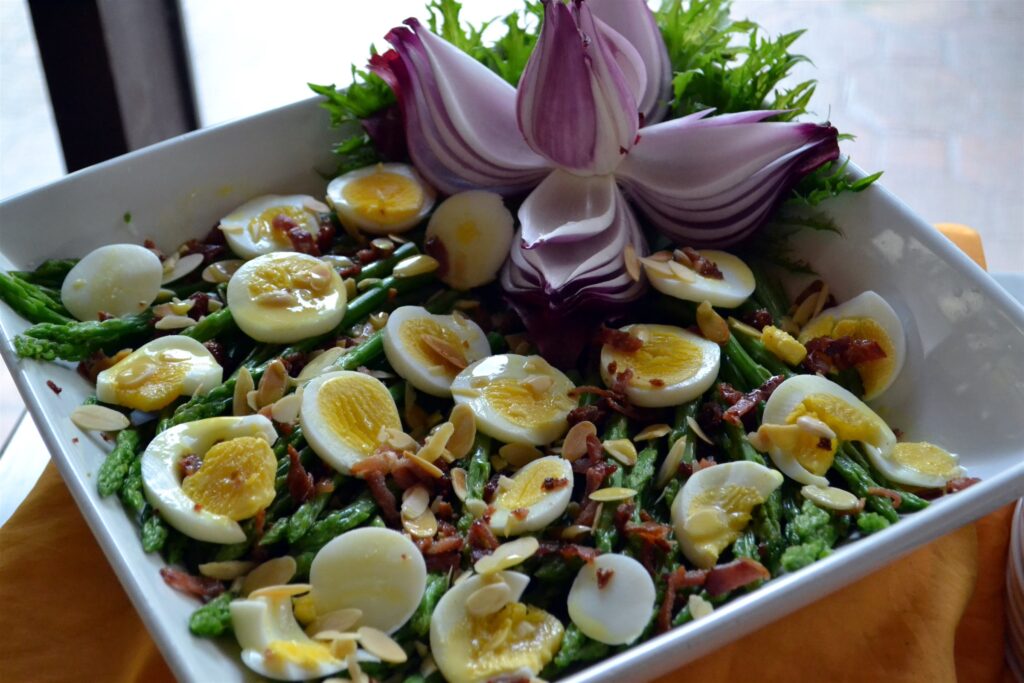‘THE egg,” said one famous French chef, “is the cement that holds all the castles of cookery together.”
Text and Photos by Henrylito D. Tacio
How true. As chefs Joe Famularo and Louise Imperiale wrote in their collaborative book, The Festive Famularo Kitchen: “We couldn’t cook without them.” The two authors pointed out, “Eggs whip into Italian zabaglione, French mayonnaise and American baked Alaska. They are indispensable as lightening, thickening, binding, and enriching agents. They are necessary for cutlets, fritters and custards; in garnishings, salads and dressings; in sauces and soups. They clarify liquids. They become main dishes. They scramble, fry, boil, poach and bake.”
In the Philippines, hard-cooked eggs are quite common. They are one of the important ingredients in such popular dishes as morcon, pansit malabon, luglug, pansit bihon, sarciado, galantina, tamales and potato salad.
A close look at the egg shows that it is “almost the perfect food”: a large chicken egg has 75 calories, 6 grams of protein, 215 milligrams of cholesterol, 65 milligrams of potassium, and 1 gram of carbohydrate. It also contains 4.5 grams of fat, including 1.5 grams of saturated fat, along with varying amounts of 13 vitamins – including iron, phosphorus and magnesium – and numerous minerals. Except for vitamin C, an egg has just about everything.

Eggs can be included in almost everyone’s diet. Easily digested, they are one of the first solid foods fed to infants, and may also be easy to keep down by the ill and convalescent. Eggs also aid in the rapid growth of children and teenagers, and provide quick, easily prepared meals for adults and the elderly.
Despite all these, they are still a much-maligned food. As explained by Linda Braun, the consumer services manager for the American Egg Board: “When the cholesterol scare started in the ‘80s, eggs were an easy target. Americans like to think if they can remove just one thing from their diet, everything will be alright. Unfortunately, eggs were that one thing.” Predictably, soon enough, Filipinos followed suit. “I don’t eat eggs because my American friends told me they contain high levels of cholesterol,” explains a former fashion model.
Unknown to many, 100 grams of eggs has only 144 calories, compared to salmon, 203; ham, 374; cheddar cheese, 398; and hamburger, 377.
Salmonella poisoning is another thing. Contaminated eggs cause several cases of food poisoning each year. Granted, the illness was rarely fatal, but it still guaranteed a bout of high fever, intestinal misery, and days of downtime on the couch. Again, however, let’s get the facts on the table: Some eggs do harbor salmonella bacteria, and some people get sick from eating them. But with proper food preparation, even a daily eggs-over-easy lover runs an extremely low risk. Bacterial multiplication is rare in any new-laid egg because fresh egg white is “bacteriostatic” – meaning it won’t permit bacteria to multiply.

How can you determine if an egg is fresh or not? Well, an egg is fresh if it has the following characteristics:
1. The egg has cloudy or milky white color. The cloudiness indicates that the carbon dioxide naturally present in a newly laid egg has not yet escaped as gas through the shell. As the gas escapes, the whites become clearer.
2. A fresh egg will cover only a small area in the frying pan because its white is still thick and large and stands high and firm around the yolk. The amount of thick white decreases the longer the egg is stored, and the egg tends to spread and cover more surface on the pan.
3. The shell of a boiled fresh egg does not peel easily. The longer an egg is stored the more it loses its carbon dioxide content and becomes easier to peel when cooked.
4. The cord-like formation that you see in an egg white, called challaza by scientists, anchors the yolk on both sides while the egg is developing. The challaza disappears as the egg grows older.
5. To test an egg for freshness, put it in a pan of water. If still fresh, the egg will sink; if no longer fresh, it will float.
Now, which came first – the egg or the chicken? Most scientists say, the chicken. Those who argue that it’s the egg say it has something to do with Adam being created first. But that’s another story. – ###








